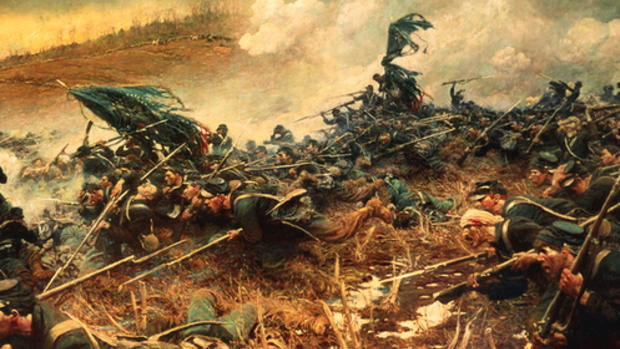Another interesting piece from the always-interesting Disunion, the New York Times’ commemoration of the sesquicentennial. This one is a reminder that the “Appomattox Peace” was the end of the beginning, as far as Southern resistance went. Reconstruction gets airbrushed away in tales of Grant and Lee and nobility and surrender.
Grant himself recognized that he had celebrated the war’s end far too soon. Even as he met Lee, Grant rejected the rebel general’s plea for “peace” and insisted that only politicians, not officers, could end the war. Then Grant skipped the fabled laying-down-of-arms ceremony to plan the Army’s occupation of the South.
To enforce its might over a largely rural population, the Army marched across the South after Appomattox, occupying more than 750 towns and proclaiming emancipation by military order. This little-known occupation by tens of thousands of federal troops remade the South in ways that Washington proclamations alone could not.
And yet as late as 1869, President Grant’s attorney general argued that some rebel states remained in the “grasp of war.” When white Georgia politicians expelled every black member of the State Legislature and began a murderous campaign of intimidation, Congress and Grant extended military rule there until 1871.
Meanwhile, Southern soldiers continued to fight as insurgents, terrorizing blacks across the region. One congressman estimated that 50,000 African-Americans were murdered by white Southerners in the first quarter-century after emancipation. “It is a fatal mistake, nay a wicked misery to talk of peace or the institutions of peace,” a federal attorney wrote almost two years after Appomattox. “We are in the very vortex of war.”
The Dangerous Myth of Appomattox – NYTimes.com.

